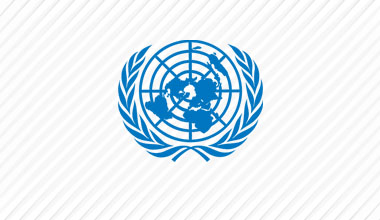Conducting a Population Census in Timor-Leste: a challenging affair
Dili, 17 June 2010 - Quite a number of countries are conducting population and housing censuses in 2010. Populous heavy-weights like USA, Brazil and Indonesia are all doing it this year, and so is tiny Timor-Leste, with financial and technical support of the UN Population Fund (UNFPA).
If you think that counting the relatively small population in a country the size of Hawaii is a walk in the park, think again. Timor-Leste, more known as East Timor, is facing a particular set of challenging circumstances: a non-existent address system, a mountainous topography, hard-to-reach rural areas and extremely low media penetration are just some factors complicating the Timorese census operation. The census will take place between the 11th and the 25th of July, thus coinciding with the World Population Day, 11 July.
The UN recommend its member states to undertake a population and housing census every ten years, so why would fledgling, far-flung and until recently crisis-ridden Timor-Leste conduct a new census just six years after its first ever population count in 2004? After all, counting every person in a country is a huge and costly task, and financial resources are not exactly abundant in Timor-Leste. According to the 2007 Timor-Leste Living Standard Survey, 49 per cent of its population live below the poverty line.
"The Timorese Government approached UNFPA in late 2007 asking us to support a Population and Housing Census in 2010, just like we did in 2004. With an estimated annual population growth of 3.2 per cent and with a lot of internal migration taking place as the result of a 2006 crisis the Government thought that the population information collected in 2004 was already rather outdated", explains Pornchai Suchitta, UNFPA's Country Representative in Timor-Leste.
After more than 400 years under Portuguese colonial rule and 25 years of Indonesian occupation, Timor-Leste finally gained its long-awaited independence in 2002, shepherded by a UN-led interim government between 1999 and 2002. When the Indonesian troops left the country in 1999, there was a lot of bloodshed and most of Timor-Leste's infrastructure was burnt, destroyed or taken back to Indonesia. The arduous and complex task of rebuilding the country has just started, and updated facts and numbers about the population are essential in order to plan and implement realistic public policies and development programmes.
"The 2004 Census proved to be very useful for the Government and its development partners, but Timor-Leste has changed a lot since then. Everyone involved in developing the country is eagerly awaiting a new snapshot of the country's demographics", says Pornchai Suchitta.
In a gesture to emphasize the importance the Timorese Government attributes to the 2010 Census, H.E. Mr. Jose Ramos Horta, the President of the Republic, was the one who launched the National Census Publicity Campaign on 14 May. To regulate the different aspects of the census the National Parliament has also approved a special 2010 Population and Housing Census Law, making the participation in the census a mandatory civic duty.
The planning and preparations of the 2010 Population and Housing Census in Timor-Leste have been going on for more than two years, and for good reasons. Counting the people living in a country with no real address system is a daunting task. Add the difficulties involved in promoting a census in a place where most people live in hard-to-access rural areas, where a large portion of the population is illiterate, where the population speaks more than 30 different languages and dialects and where the reach of mass media is extremely limited and the census challenge looms even higher.
Yet Fredrick Okwayo, UNFPA's Chief Technical Adviser of the Census Project, is optimistic. "We are a hard-working, competent team and we are well prepared, with census questionnaires translated into four different languages. With the help of aerial photos we have created a lot more than 2,000 maps of the Timorese territory, and the census field staff will be using GPS (Global Positioning System) equipment to make sure that every household is found and counted", he says.
The 2010 Census is estimated to cost USD 4.2 million and is jointly financed by the Government of Timor-Leste and UNFPA. Apart from assisting the census operation financially, UNFPA is also giving the Government technical, logistical and administrative support. So far, technical experts from more than ten countries have participated in the census process. UNFPA has also engaged a large number of national staff to work with Government counterparts.
Approximately 4,000 people, including 2,630 interviewers and 615 GPS coordinate takers, will be working in the field to make the 2010 Census a successful one. Some key field staff members, like the Publicity Messengers, are already making their indispensable contributions in the 13 districts of Timor-Leste. Their task is to create census awareness in the country's many remote villages (sucos), and there is only one way of doing it. "There is no such thing as a publicity shortcut to the faraway villages. These places lack electricity, newspapers and TV, and very few people have a radio. In fact, in some isolated places you can't even listen to radio, which means that the only way to inform the villagers is to go there and organize community meetings", says Filip Andersson, UNFPA's Census Publicity & Advocacy Officer.
The 2010 Census in Timor-Leste is a good example of the UN family working together, especially when it comes to publicity issues, Filip Andersson says. Various sections and units of the United Nations Integrated Mission in Timor-Leste (UNMIT) have been assisting UNFPA and the Timorese Government with part of both the production and the dissemination of census publicity material.
In 2004 Timor-Leste had 923,198 inhabitants. Six years later, the estimated population is 1,155,000, with 43.2 per cent being under 15 years old. The median age of the Timorese people is a mere 18.3 years.
Filip Andersson
Census Publicity & Advocacy Officer, UNFPA/NSD (National Statistics Directorate)
 UN
UN United Nations Peacekeeping
United Nations Peacekeeping




